
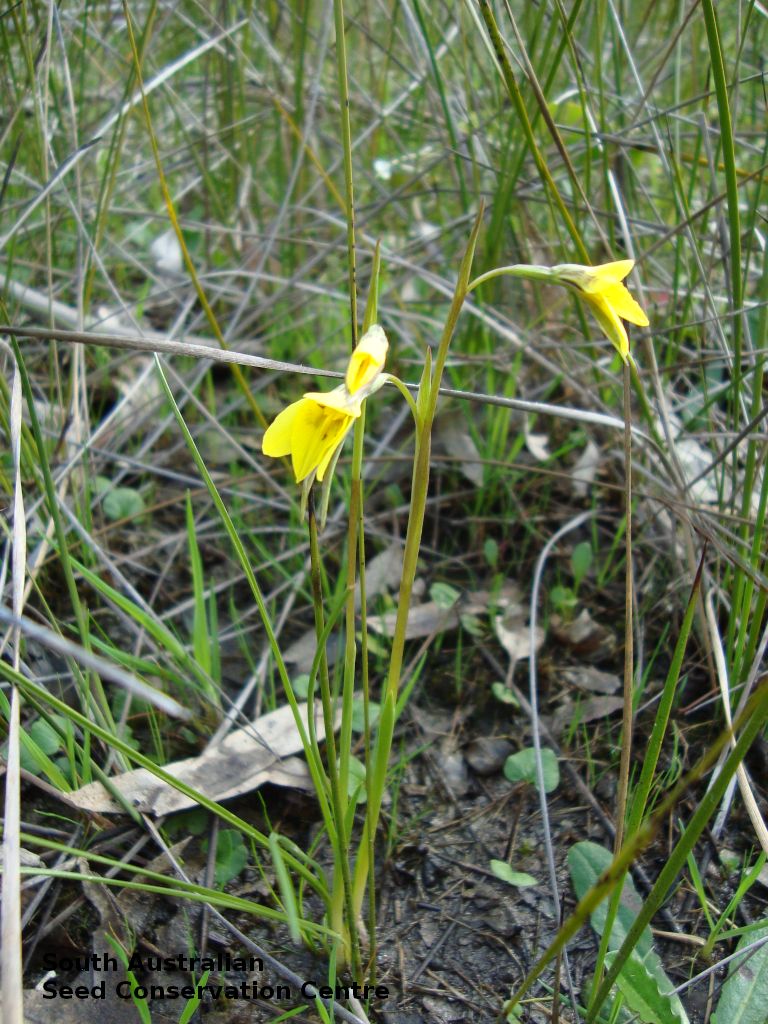
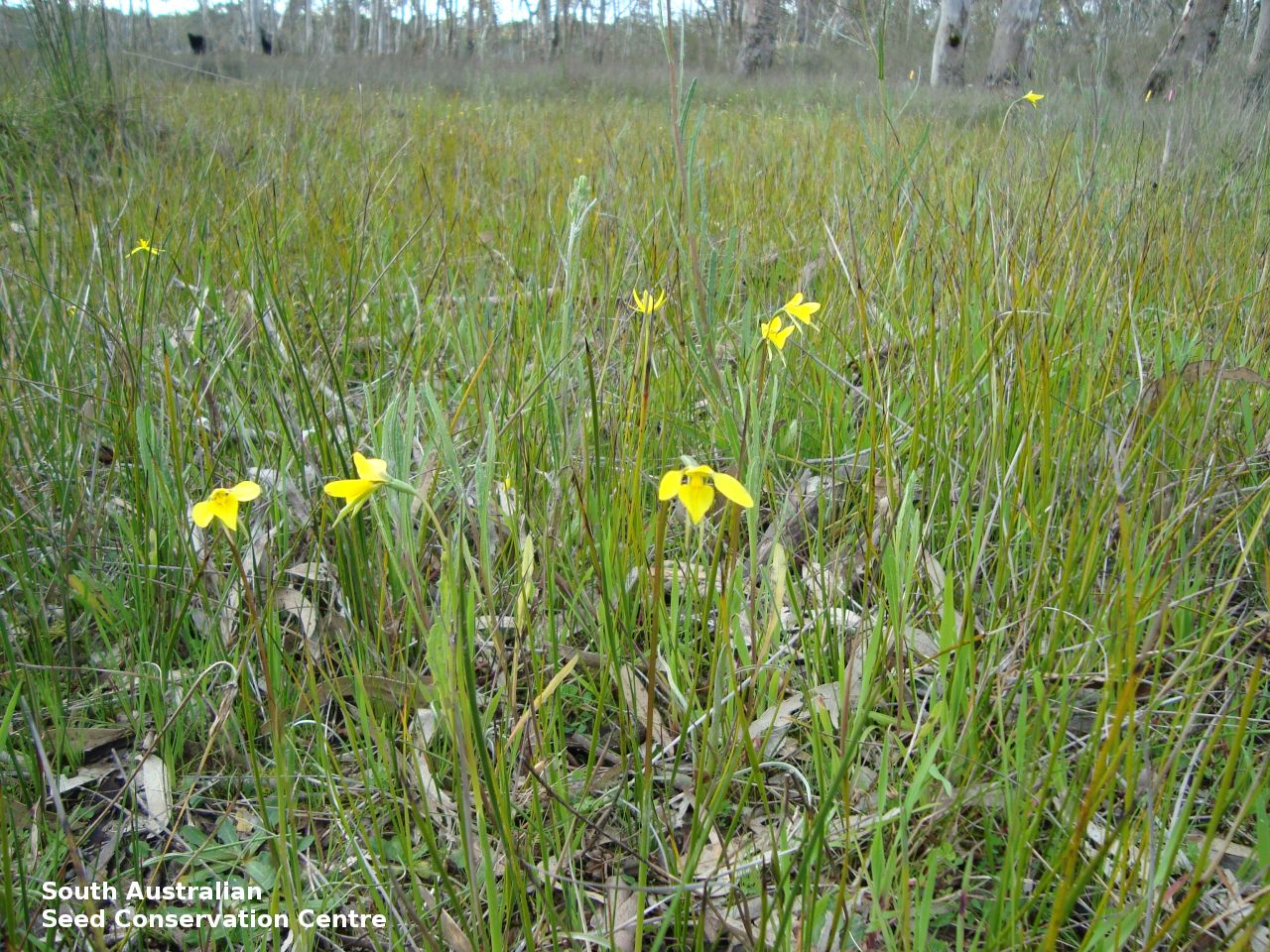
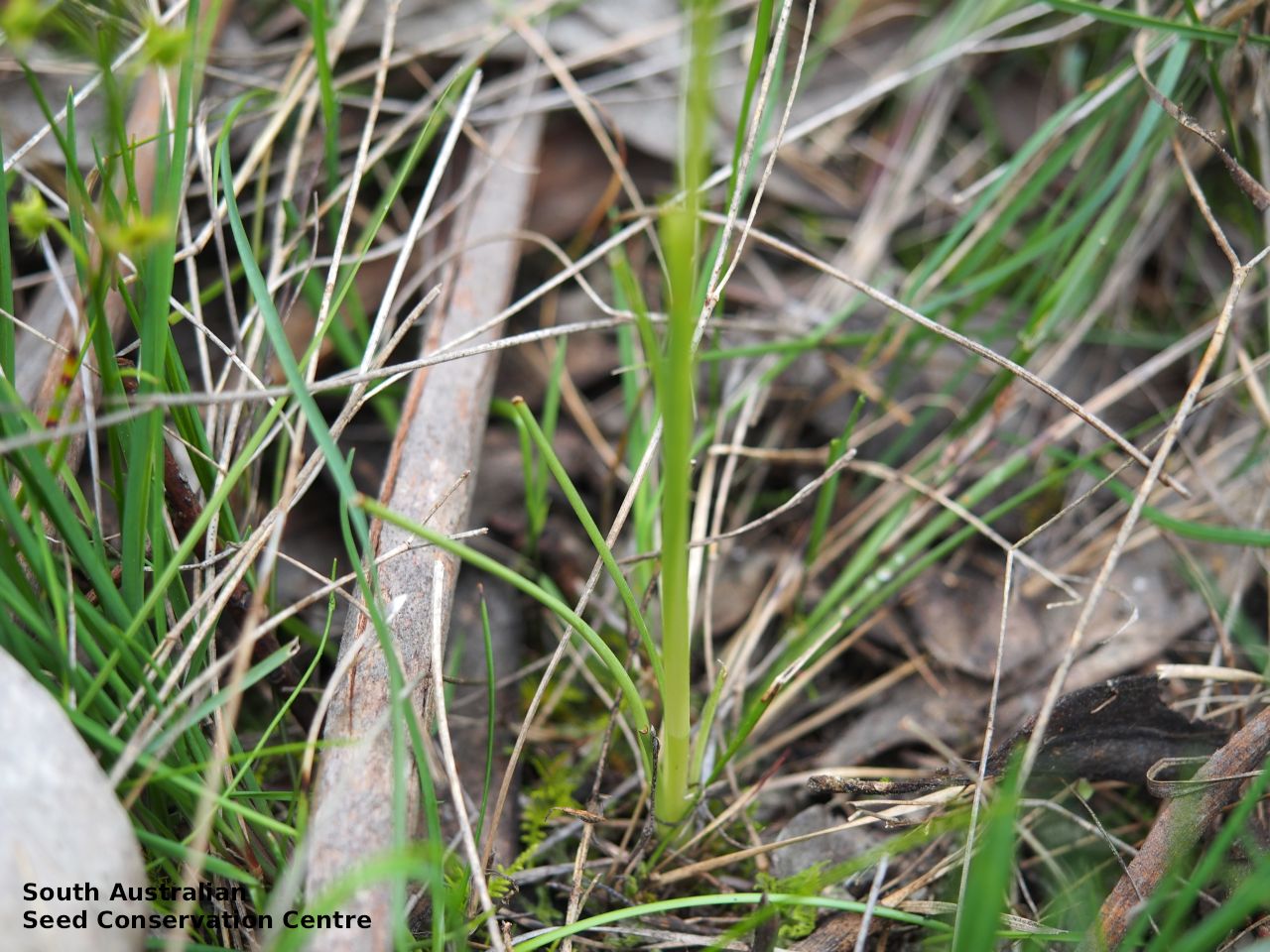

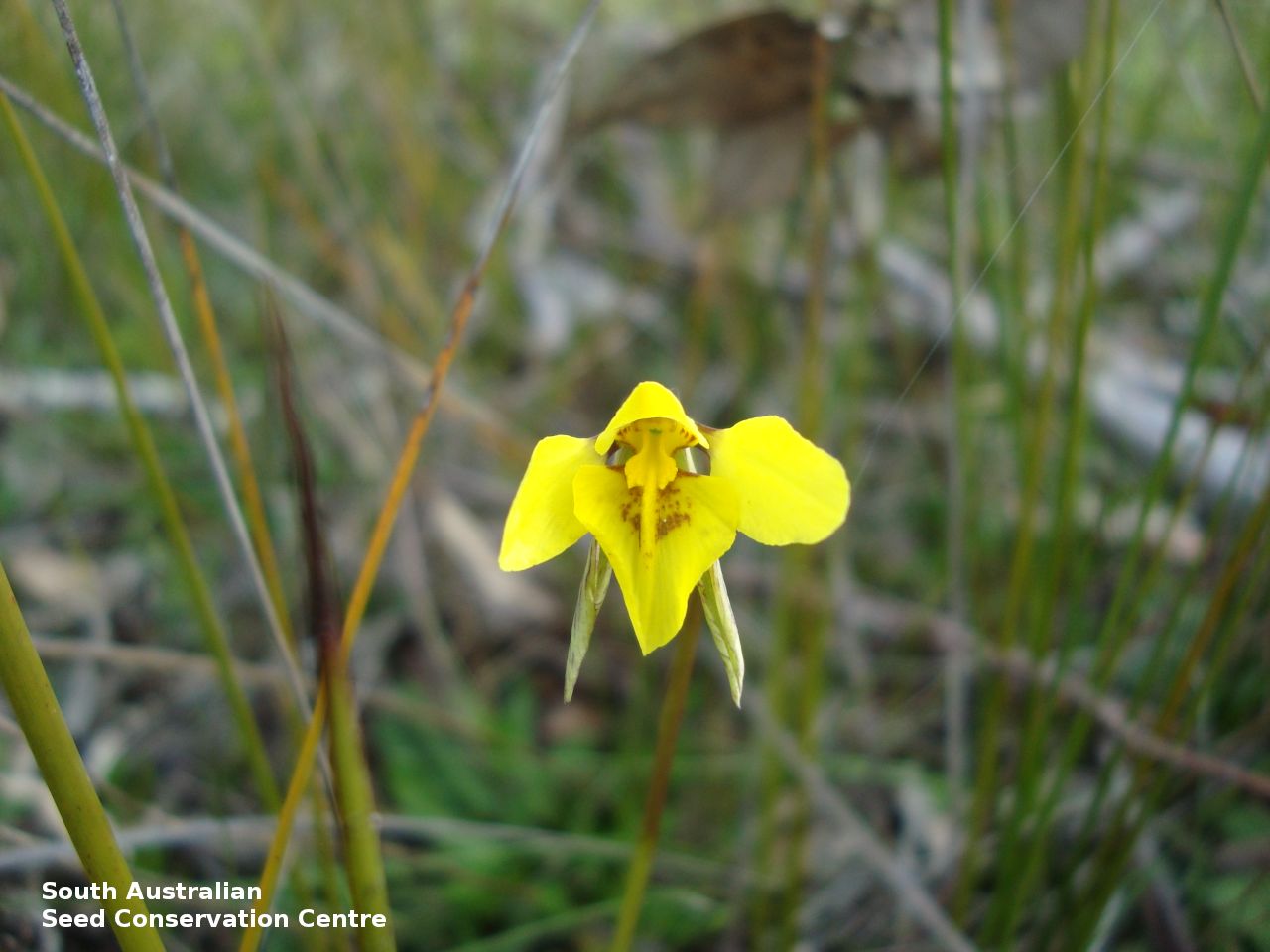

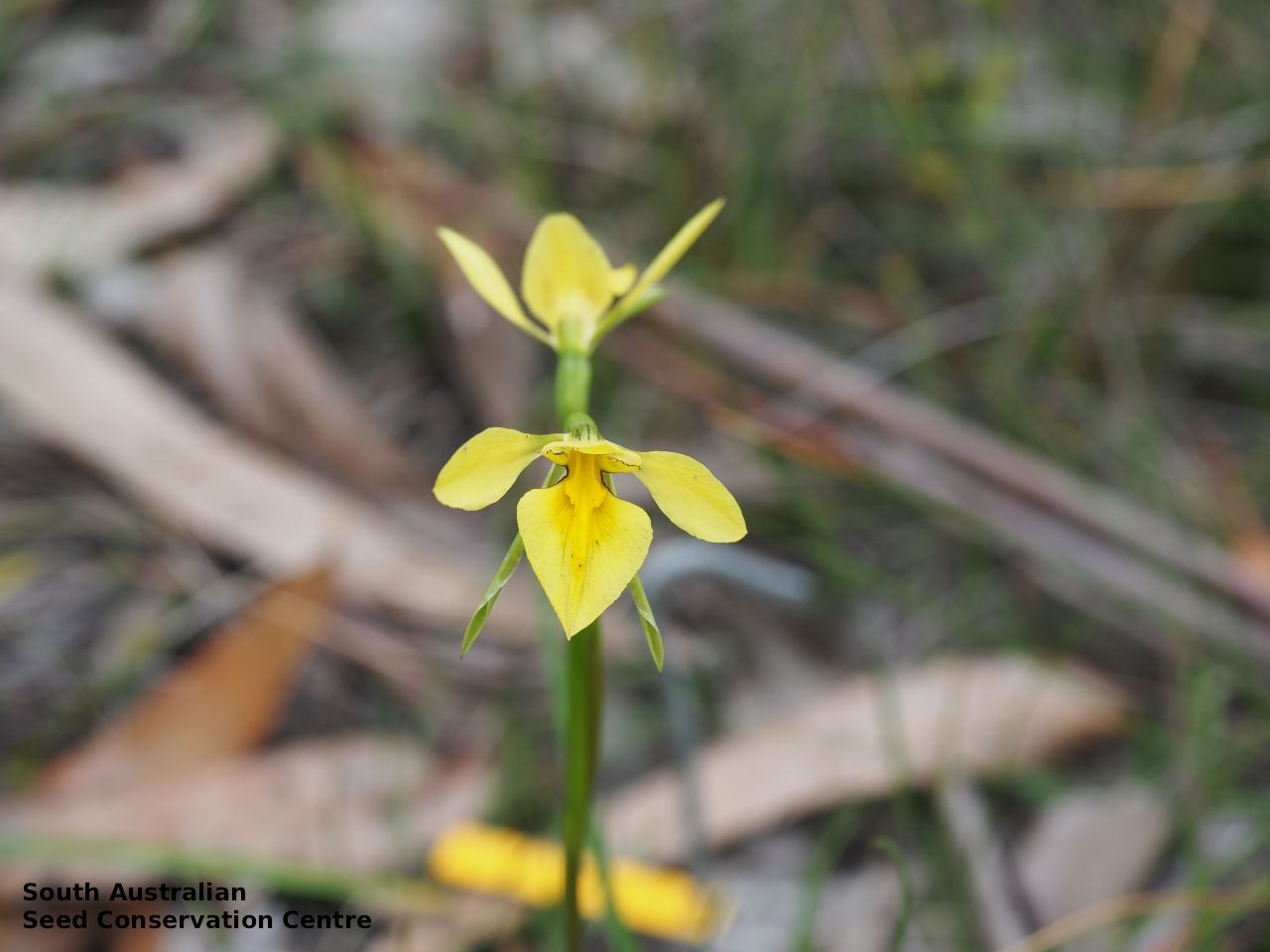
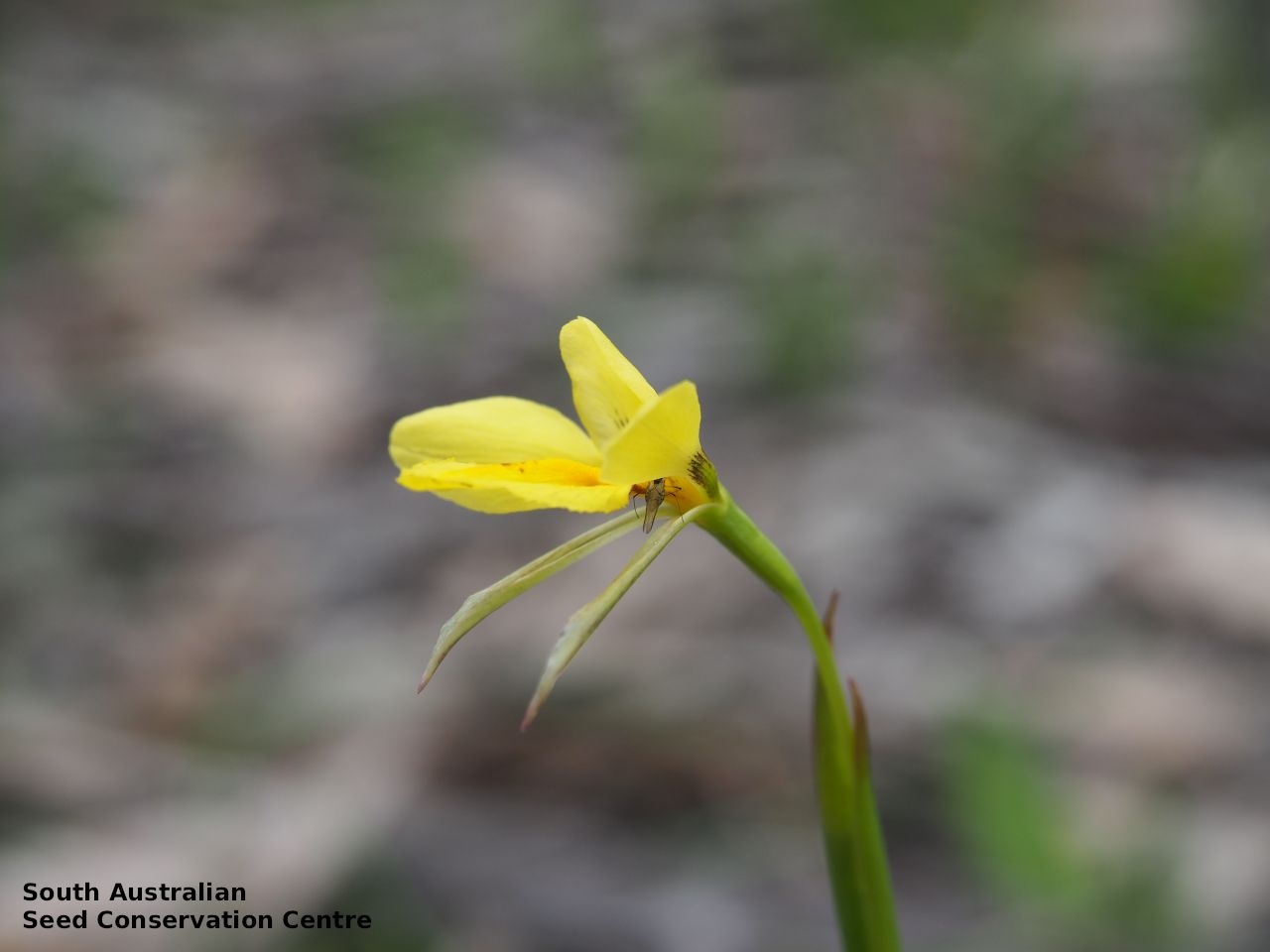
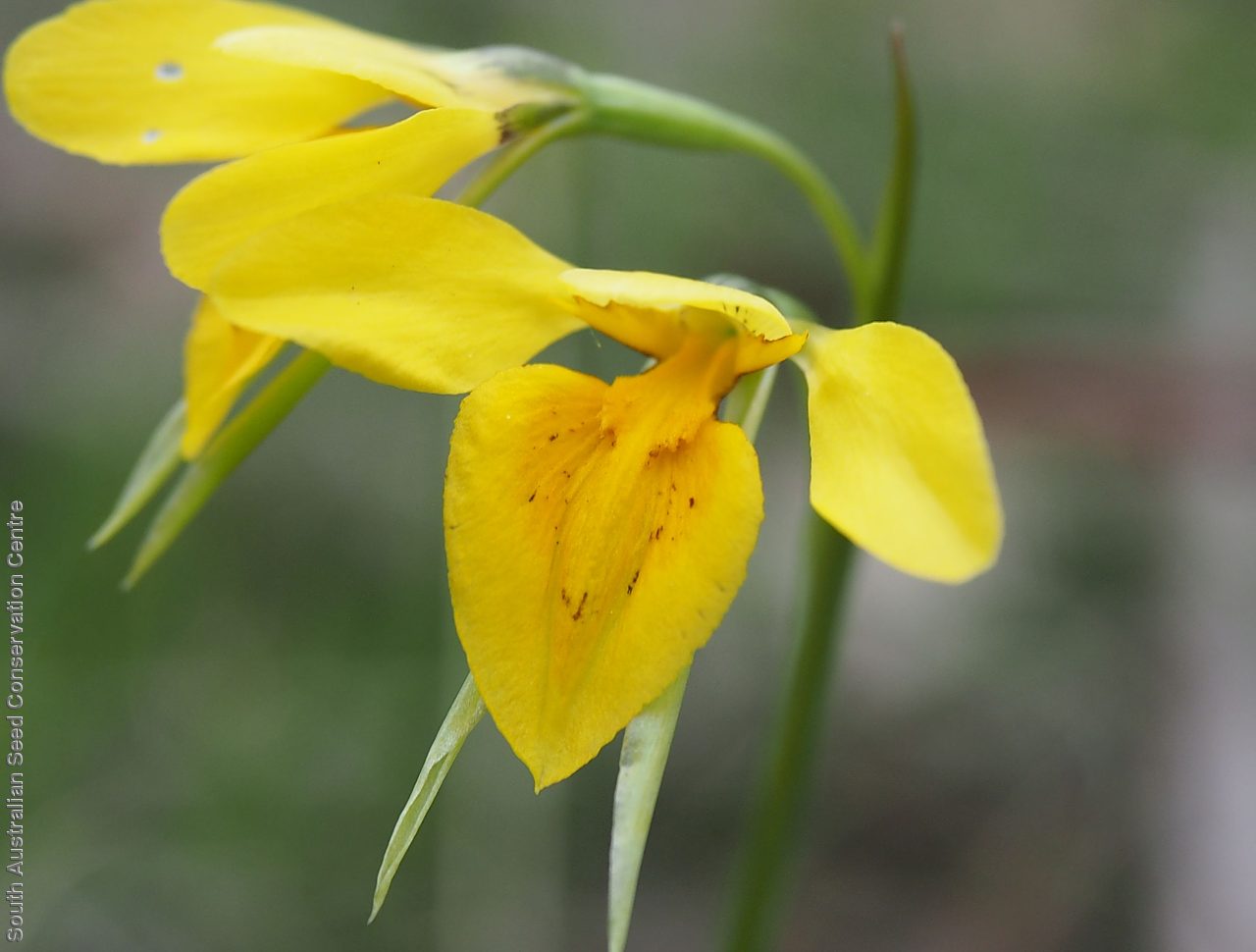
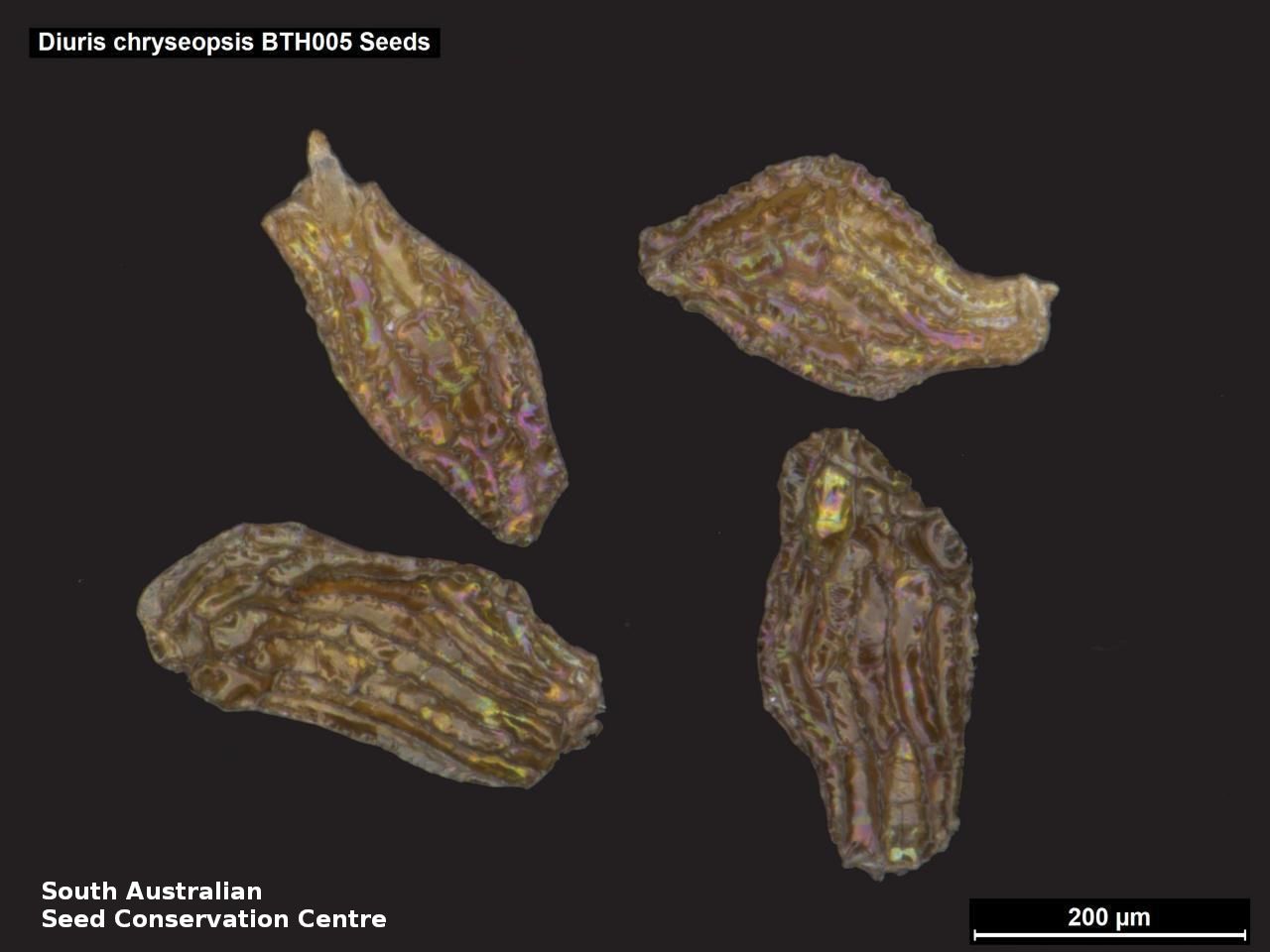


Botanical art
Prior names
Diuris pedunculata, partly
Diuris lanceolata, partly
Common names
Small Golden Moths
Cowslip Orchid
Golden Moths
Etymology
Diuris from the Greek 'dis' meaning double and 'oura' meaning a tail, referring to the pendulous lateral sepals resembling tails on some species. Chryseopsis from the Greek 'chrysos' meaning gold and 'opsis' meaning appearance, referring to the colour of its flowers.
Distribution and status
Presumed extinct in the Mt Lofty Ranges (but may have been rediscovered in Kuitpo Native Forest Reserve) and found only between Naracoorte and Mount Gambier in South Australia, growing in damper grassy patches in woodland around waterholes, along creeks, on cooler slopes in rich, moist soils. Also found in New South Wales, Victoria and Tasmania. Native. Very rare in South Australia. Common in the other States.
Herbarium regions: Southern Lofty, South Eastern, Green Adelaide
NRM regions: Adelaide and Mount Lofty Ranges, South East
AVH map: SA distribution map (external link)
Plant description
Annual terrestrial orchid growing to 30 cm tall with up to 4 flowers. Leaves slender, grass-like, 3–5 but up to 8, channelled, to 22 cm long. Flowers are compressed, drooping, lemon yellow with fine brown or greenish-brown markings on outer surface. Dorsal sepals erect, broadly ovate, much shorter than other perianth parts, lateral sepals obliquely deflexed, usually parallel, linear-lanceolate to 20 mm long, petals spreading or drooping. Labellum obliquely deflexed with 3-lobed, lateral lobes small, asymmetrically narrow-lanceolate, mid-lobe almost flat and approx. 3 times as long as the lateral lobes. Flowering between August and October. Fruits are brown papery ellipsoid capsule. Seeds are very small brown ellipsoid seed with an oval translucent brown mesh-like covering.
Seed collection and propagation
Collect seeds between December and February. Collect fat capsules as they start to dry and turn brown. Pods will split and release the seeds quickly and will require monitoring. To increase the chances of collecting mature pods, it is recommended that a small breathable bag (ie. Organza bags) be used to enclose the developing capsules. Place the capsules in a container that will hold fine seeds and leave to dry for a few weeks or until the capsule split. Then carefully hold the capsule and tap it gently to release the seeds. Store the seeds with a desiccant such as dried silica beads or dry rice, in an air tight container in a cool and dry place, refrigerator or in liquid nitrogen. For the NVC South East Orchid Project two populations consisting of more than 600 individuals in total were recorded from Topperwien and Wandilo. Approximately 205,000 seeds (0.22 g) were banked for these two populations. Seed viability was 81% and 87%. Seed germination in Diuris is difficult without the presence of compatible mycorrhizal fungi.
| Location | No. of seeds (weight grams) | Number of plants | Date collected | Collection number Collection location | Date stored | % Viability | Storage temperature |
|---|---|---|---|---|---|---|---|
| BGA | 90,000 (0.103 g) | 8 pods | 18-Nov-2013 | BTH5 South Eastern | 1-Nov-2016 | 81% | -80°C |
| BGA | 110,000 (0.119 g) | 11 pods | 20-Nov-2013 | DJD2761 South Eastern | 1-Nov-2016 | 87% | -80°C |
| BGA | 350,200 (0.32 g) | 23 | 30-Oct-2018 | DJD3786 Southern Lofty | 24-Apr-2019 | N/C | -18°C, -80°C |
Number of plants: This is the number of plants from which the seeds were collected.
Collection location: The Herbarium of South Australia's region name.
% Viability: Percentage of filled healthy seeds determined by a cut test or x-ray.